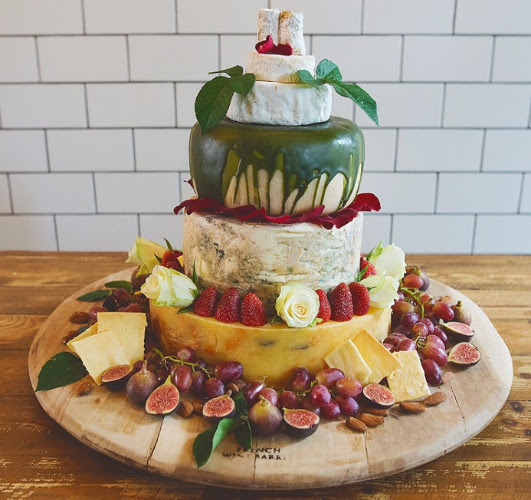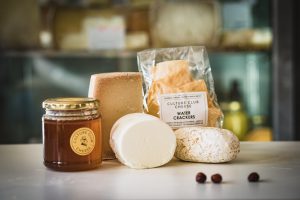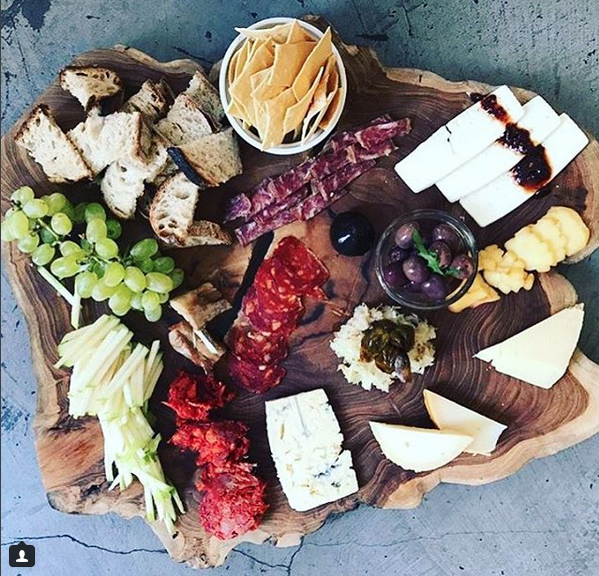Note: Culture Club Cheese has closed down, but the information below is still useful.
I received this in a Culture Club Cheese newsletter and immediately asked owners Luke and Jessica if I could share the information with my readers. Building a perfect cheeseboard is a necessary skill in my opinion, and let’s face it, cheese ain’t cheap! You want to make sure you do it right, whether you’re a home entertainer or a professional caterer. Actually, I wished I’d known all of this below when I first started catering, many moons ago. So bookmark this post somewhere, and follow Luke’s tips below for maximum visual and taste impact.
I’ve copied the newsletter and share it here with Luke’s permission:
Culture Club Cheese’s Ultimate Cheese Platter Guide
How to plan your perfect festive cheese platter and caring for your Christmas cheeses!

1. Shop with a Cheesemonger
The first step is to find your local Monger (or come to us!) These cheese experts are responsible for procuring and caring for the cheese in the shop, and should offer tastes, impart knowledge about the cheese and where it comes from (so you can ensure it is ethical sourced with no preservatives or additives), and guide you in selecting your cheese.

2. How much should you serve?
It can sometimes be hard to know how much cheese to buy. If you are at all unsure please give us a call for some advice. As a general rule of thumb, we would recommend roughly between 100 – 150 grams per person for after dinner, and a bit more if cheese is the focus of the meal. If you are buying cheese to serve over a couple of days or as part of a buffet, it is advisable to buy a few larger pieces. This will both look better and keep better than many small bits. Odd numbers are most visually pleasing to the eye, and the taste buds. Depending on your group size aim for 3, 5, or 7 options on your board plus seasonal accompaniments.






3. Consider texture, variety & accompaniments
Choose different types of cheeses with an array of textures (washed rind, fresh, soft, semi-soft, hard or blue), or select your cheeses based on milk type (cow, goat or sheep’s.)
Include local, seasonal accompaniments such as nuts, fruit (figs, grapes and Christmas citrus), sauerkraut and olives to provide a mixture of salty and sweet flavors. An unpasteurised honey works well drizzled over a fresh goat’s cheese. An extra mature cheese tastes delicious aside some turmeric sauerkraut.
4. Pay attention to presentation
Cut, crumble or shave hard cheeses so that they are more approachable for guests. Wedges are an eater-friendly option that add a playful touch to your board, but bear in mind, these will not last so well if there are leftovers! With softer cheeses, leave them whole or halved for scooping and spreading.

5. Serving your cheese & pairing:
Remember to always serve your cheese at room temperature so that it can really shine. It is very important not to serve your cheese when it’s too cold as cold cheese can taste bland. As a general rule of thumb you should bring it out of the fridge a few hours before you plan to serve it. You should keep your cheese wrapped whilst it is coming up to room temperature, to avoid any risk of it drying out. If it is especially hot you should reduce the amount of time the cheese is out of the fridge accordingly. Importantly, it is key to pair your cheese with something delicious to drink. We have a selection of wine, beer, whiskys and soft drinks (kombucha) which we pair with each of our individual cheeses – however we are happy to advise you if you have a specific drink you would like to pair with some delicious farmhouse cheese.
6. Caring for your cheese
We sell our cheese wrapped in waxed cheese paper, which achieves the best possible balance between maintaining humidity around the cheese and allowing it to breathe. We are happy to provide some extra cheese paper. If you wrap your cheese in cling film or foil, it can cause the cheese to sweat which will negatively affect the flavour.
Cut pieces of cheese should be kept in the refrigerator to slow the growth of mould on their cut surfaces. However, it is important to be aware that refrigerated cheese is more likely to dry out, particularly if it is not wrapped. The best option is to keep the cheese wrapped in its waxed paper within a box in the fridge. The container will help to prevent the cheese from drying out and prevent the cheese from absorbing flavours from other foods in the fridge.
Address: 215 Bree St, Cape Town City Centre, Cape Town, 8000
Opening hours:
| Wednesday | 9AM–5PM |
| Thursday | 9AM–11PM |
| Friday | 9AM–11PM |
| Saturday | 9AM–11PM |
| Sunday | 9AM–3PM |
| Monday
(Christmas Day) |
9AM–5PM
Hours might differ |
| Tuesday
(Boxing Day) |
9AM–5PM
Hours might differ |
Website www.cultureclubcheese.co.za
Email: hello.cultureclub@gmail.com
All photos by Luke Williams, Culture Club Cheese Bree Street.